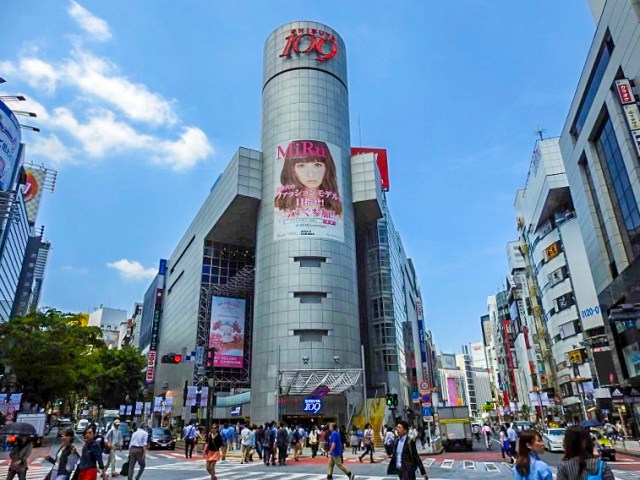
In search of the elusive Japanese unicorn.
On 13 July, the government of Japan announced four regions of the country to be Global Base Cities, which are to be essentially the Japanese equivalent of the US’s Silicon Valley, where rampant tech innovation is fueled by intense investments from venture capital firms.
In doing so, these four areas will become the focal points of start-up investment and also beacons for Japan’s youngest and brightest minds to gravitate towards. Sounds like it would be an awesome way to improve Japan’s tech reputation while also revitalizing some of Japan’s rural areas that are currently teetering on the brink of extinction due to severe depopulation.
So, let’s take a look at the proposed regions:
- Tokyo and surrounding areas Yokohama, Tsukuba, and Ibaraki
- Central Aichi Prefecture, including Nagoya and Hamamatsu
- Kansai Area, including Osaka, Kobe, and Kyoto
- Four cities around Fukuoka yet to be determined
By the way, Japan’s most populous cities are Tokyo, Yokohama, Osaka, Nagoya, Sapporo, Fukuoka, Kobe, and Kyoto. So, the parts of Japan where most business is done and most people from rural areas move to… um, I guess will carry on as usual, but get even more support from the government?
▼ Just imagine, someday this cow pasture in Shibuya will become totally developed with large buildings and crowds of businesspeople bustling about
Fine, okay… But at least facilitating a business environment similar to that of Silicon Valley will be helpful to Japan’s economy in the long run. And sure, the real Silicon Valley was the product of over a hundred years of contributions from the US government, academia, and the military, all of which was also shaped by decades of gradually changing social trends, but I don’t see why Japan can’t just fart out that same magic in five different locations in less than 10 years.
That is the time frame that the government set up for each area to establish five or more unicorn companies, which are companies valued at over a billion US dollars before going public. Of the 475 unicorns in existence as of this writing, Japan is home to only three, compared to China’s 123 and the US’s 225.
▼ Current Japanese unicorns are AI firm Preferred Networks, Crypto-trading app Liquid, and the app SmartNews, which comedy duo Downtown really seem to enjoy getting coupons on
One would assume these companies are called “unicorns” because they are as rare and unpredictable as the magical horses themselves, so mandating that certain amount be established in a given time frame seems misguided. And if I’m wrong, someone tell me how to get a real unicorn in time for my daughter’s birthday next month…and without using hot glue because I don’t want to get bucked off again.
Nevertheless, some people in Japan are welcoming the government’s initiative. Either that or they’re being sarcastic. It’s tough to tell sometimes.
“Wow!!!!!”
“Japan’s time has come!”
“Oh good, Tokyo is really in need of help.”
“That’s too many. They should just focus on one area.”
“But, I’m already in Tokyo.”
“This is about 50 years too late.”
“Hopefully, this will revitalize Shibuya.”
“Silicon Valley is on the other side of the country from New York and Shenzhen is on the other side of the country from Beijing. So why are we putting ours in Tokyo?”
“Hokkaido gets screwed again…”
This might sound overly cynical to some readers, but to many here in Japan this is all eerily similar to the Cool Japan project that was established in 2013. Billed as a government funded investment initiative to put Japan’s best – or at least “coolest” – foot forward and promote its pop culture around the world, Cool Japan instead sunk billions of yen into abacuses and an overpriced department store in Malaysia.
I really hope I’m wrong, but based on the Cool Japan fiasco, I’m going to call it that in 2025 we’ll see the fruits of Japan’s Silicon Valleys to be an AR version of FarmVille and an abacus that lights up.
Source: NHK, Sankei News, Kinisoku
Top image: Pakutaso
Insert image: ©SoraNews24
● Want to hear about SoraNews24’s latest articles as soon as they’re published? Follow us on Facebook and Twitter!


 Japanese city makes list of world’s top 10 most livable cities, but not one most people expected
Japanese city makes list of world’s top 10 most livable cities, but not one most people expected Here are the 10 richest companies in Japan: Can you guess which is number one?
Here are the 10 richest companies in Japan: Can you guess which is number one? Japan’s ‘agri-tech’ farming revolution
Japan’s ‘agri-tech’ farming revolution Japanese government may soon start bribing people three million yen to move out of Tokyo
Japanese government may soon start bribing people three million yen to move out of Tokyo “What’s wrong with her eyes!?” Say hello to the dentist’s doll from the (past, present) future
“What’s wrong with her eyes!?” Say hello to the dentist’s doll from the (past, present) future Beautiful new Final Fantasy T-shirt collection on the way from Uniqlo【Photos】
Beautiful new Final Fantasy T-shirt collection on the way from Uniqlo【Photos】 Our reporter takes her 71-year-old mother to a visual kei concert for the first time
Our reporter takes her 71-year-old mother to a visual kei concert for the first time Disney princesses get official manga makeovers for Manga Princess Cafe opening in Tokyo
Disney princesses get official manga makeovers for Manga Princess Cafe opening in Tokyo Is the new Shinkansen Train Desk ticket worth it?
Is the new Shinkansen Train Desk ticket worth it? Randomly running into a great sushi lunch like this is one of the best things about eating in Tokyo
Randomly running into a great sushi lunch like this is one of the best things about eating in Tokyo A new meaty dawn for Akihabara as neighborhood’s best steak/hamburger steak restaurant reopens
A new meaty dawn for Akihabara as neighborhood’s best steak/hamburger steak restaurant reopens Hey, Japanese taxi driver! Take us to your favorite restaurant in Tsuruga City!
Hey, Japanese taxi driver! Take us to your favorite restaurant in Tsuruga City! This Nara workshop has been making deer crackers for more than 100 years and offers tours【Photos】
This Nara workshop has been making deer crackers for more than 100 years and offers tours【Photos】 Yu-Gi-Oh! creator apologizes for drawing characters making political statements ahead of elections
Yu-Gi-Oh! creator apologizes for drawing characters making political statements ahead of elections Korean “Let it Go” parody is hilariously perfect
Korean “Let it Go” parody is hilariously perfect We try out “Chan Ramen”, an underground type of ramen popular in the ramen community
We try out “Chan Ramen”, an underground type of ramen popular in the ramen community New Studio Ghibli bedding sets are cool in all senses of the word
New Studio Ghibli bedding sets are cool in all senses of the word Our Japanese reporter visits Costco in the U.S., finds super American and very Japanese things
Our Japanese reporter visits Costco in the U.S., finds super American and very Japanese things Foreign English teachers in Japan pick their favorite Japanese-language phrases【Survey】
Foreign English teachers in Japan pick their favorite Japanese-language phrases【Survey】 New Pokémon cakes let you eat your way through Pikachu and all the Eevee evolutions
New Pokémon cakes let you eat your way through Pikachu and all the Eevee evolutions There’s a park inside Japan where you can also see Japan inside the park
There’s a park inside Japan where you can also see Japan inside the park Japanese convenience store packs a whole bento into an onigiri rice ball
Japanese convenience store packs a whole bento into an onigiri rice ball Hanton rice — a delicious regional food even most Japanese people don’t know about, but more should
Hanton rice — a delicious regional food even most Japanese people don’t know about, but more should Final Fantasy, Kingdom Hearts, and Dragon Quest pet product line announced by Square Enix
Final Fantasy, Kingdom Hearts, and Dragon Quest pet product line announced by Square Enix Studio Ghibli releases Kiki’s Delivery Service chocolate cake pouches in Japan
Studio Ghibli releases Kiki’s Delivery Service chocolate cake pouches in Japan Japan’s bone-breaking and record-breaking roller coaster is permanently shutting down
Japan’s bone-breaking and record-breaking roller coaster is permanently shutting down New definition of “Japanese whiskey” goes into effect to prevent fakes from fooling overseas buyers
New definition of “Japanese whiskey” goes into effect to prevent fakes from fooling overseas buyers Foreign passenger shoves conductor on one of the last full runs for Japan’s Thunderbird train
Foreign passenger shoves conductor on one of the last full runs for Japan’s Thunderbird train Kyoto bans tourists from geisha alleys in Gion, with fines for those who don’t follow rules
Kyoto bans tourists from geisha alleys in Gion, with fines for those who don’t follow rules Studio Ghibli unveils Mother’s Day gift set that captures the love in My Neighbour Totoro
Studio Ghibli unveils Mother’s Day gift set that captures the love in My Neighbour Totoro Domino’s Japan now sells…pizza ears?
Domino’s Japan now sells…pizza ears? Toyota built a life-sized Miraidon Pokémon and are letting people test drive it this weekend
Toyota built a life-sized Miraidon Pokémon and are letting people test drive it this weekend New Japanese KitKat flavour stars Sanrio characters, including Hello Kitty
New Japanese KitKat flavour stars Sanrio characters, including Hello Kitty Sales of Japan’s most convenient train ticket/shopping payment cards suspended indefinitely
Sales of Japan’s most convenient train ticket/shopping payment cards suspended indefinitely Sold-out Studio Ghibli desktop humidifiers are back so Totoro can help you through the dry season
Sold-out Studio Ghibli desktop humidifiers are back so Totoro can help you through the dry season Japanese government to make first change to romanization spelling rules since the 1950s
Japanese government to make first change to romanization spelling rules since the 1950s Ghibli founders Toshio Suzuki and Hayao Miyazaki contribute to Japanese whisky Totoro label design
Ghibli founders Toshio Suzuki and Hayao Miyazaki contribute to Japanese whisky Totoro label design Doraemon found buried at sea as scene from 1993 anime becomes real life【Photos】
Doraemon found buried at sea as scene from 1993 anime becomes real life【Photos】 Tokyo’s most famous Starbucks is closed
Tokyo’s most famous Starbucks is closed One Piece characters’ nationalities revealed, but fans have mixed opinions
One Piece characters’ nationalities revealed, but fans have mixed opinions We asked a Uniqlo employee what four things we should buy and their suggestions didn’t disappoint
We asked a Uniqlo employee what four things we should buy and their suggestions didn’t disappoint Princesses, fruits, and blacksmiths: Study reveals the 30 most unusual family names in Japan
Princesses, fruits, and blacksmiths: Study reveals the 30 most unusual family names in Japan Studio Ghibli’s new desktop Howl’s Moving Castle will take your stationery on an adventure
Studio Ghibli’s new desktop Howl’s Moving Castle will take your stationery on an adventure Yokohama Beer Fes 2014 serves up Japanese craft beer from around the country【Photos】
Yokohama Beer Fes 2014 serves up Japanese craft beer from around the country【Photos】 Want to be guided around Tokyo by a ninja? With an upcoming app, now you can!
Want to be guided around Tokyo by a ninja? With an upcoming app, now you can! Japanese ninja group wants to hire new member, must have strong aura and mental fortitude
Japanese ninja group wants to hire new member, must have strong aura and mental fortitude 8 Japan-related events to look forward to in 2016!
8 Japan-related events to look forward to in 2016! Girlfriend shows Gundam fan an extremely clever new way to photograph the life-size mech in Tokyo
Girlfriend shows Gundam fan an extremely clever new way to photograph the life-size mech in Tokyo Studio Ghibli theme park’s opening will not be delayed by coronavirus, planners promise
Studio Ghibli theme park’s opening will not be delayed by coronavirus, planners promise Hate speech may soon be punishable by a 500,000-yen fine in one of Japan’s largest cities
Hate speech may soon be punishable by a 500,000-yen fine in one of Japan’s largest cities Get ready for excitement, Japan—Steve Wozniak’s Comic Con is coming to Tokyo in December 2016!
Get ready for excitement, Japan—Steve Wozniak’s Comic Con is coming to Tokyo in December 2016! Survey ranks the most desirable neighborhoods to live in Japan’s Kansai region
Survey ranks the most desirable neighborhoods to live in Japan’s Kansai region Real-world forest that inspired Hayao Miyazaki to create Totoro will become a nature preserve
Real-world forest that inspired Hayao Miyazaki to create Totoro will become a nature preserve Studio Ghibli theme park designs unveiled, five special zones bring anime movie worlds to life
Studio Ghibli theme park designs unveiled, five special zones bring anime movie worlds to life Rumour: Sony and major Chinese investor in talks re: bringing PlayStation 4 to China
Rumour: Sony and major Chinese investor in talks re: bringing PlayStation 4 to China Robot finger covered in living skin developed by University of Tokyo
Robot finger covered in living skin developed by University of Tokyo Why does Japan have so many overhead power lines?
Why does Japan have so many overhead power lines? After reopening, Japan to require foreigners to eat *daily* sushi to revitalize tourism industry
After reopening, Japan to require foreigners to eat *daily* sushi to revitalize tourism industry More Japanese workers are ditching crisp business suits for casual and comfortable wear
More Japanese workers are ditching crisp business suits for casual and comfortable wear
Leave a Reply